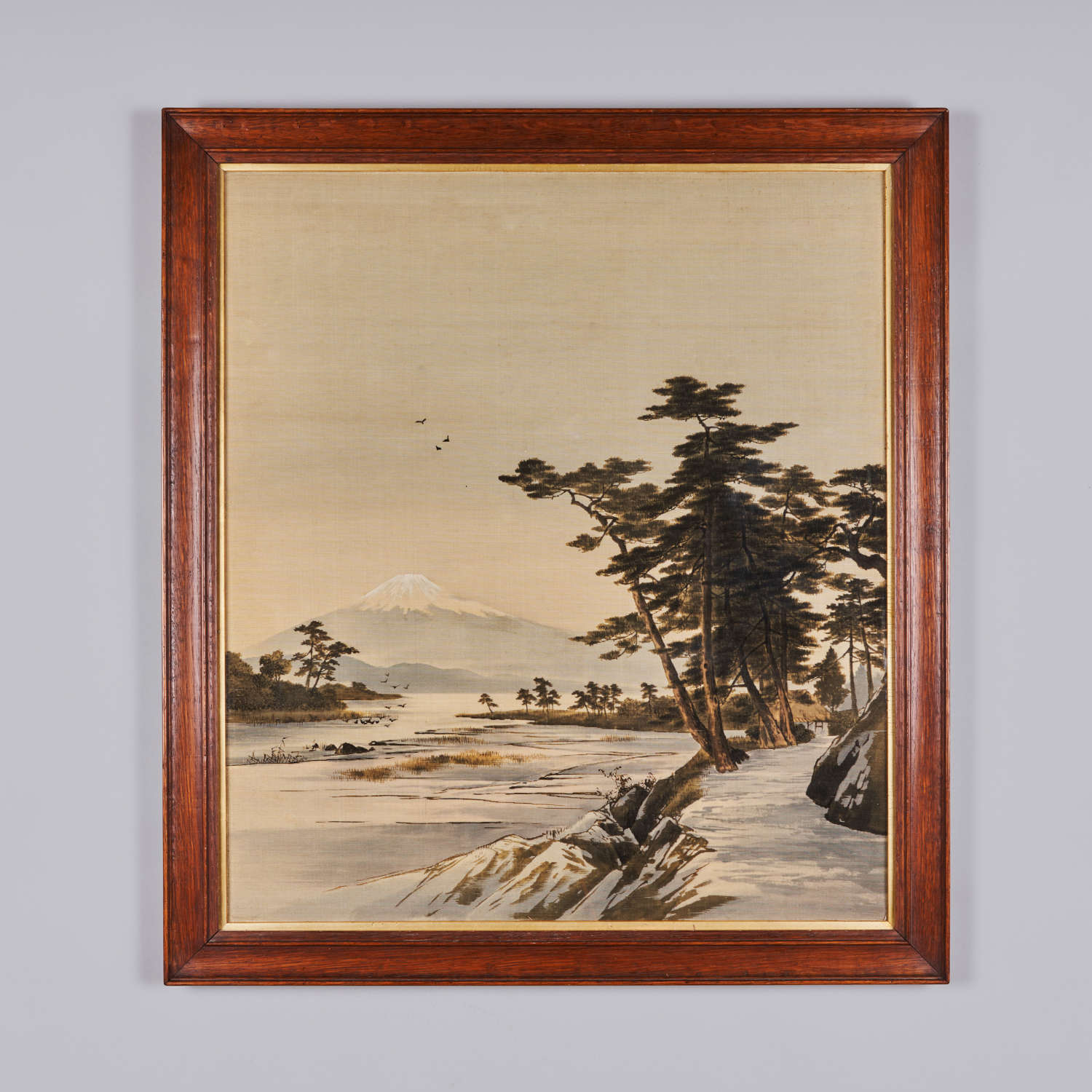




Code: 10221
Dimensions:
Japanese Yūzen-Birodo cut velvet 天鵝絨 depicting lake Kawaguchiko with pine trees by the shore and flying birds in the distance and Mount Fuji in the background original wood frame, Meiji period 1868-1912.
Mount Fuji (Fujisan 富士山) is Japan’s most sacred mountain located in the Fuji-Hakone-Izu National Park which was declared in 2013 a UNESCO World Heritage Site. Considered as holy ground for Japanese pilgrims, the mountain has been awe-inspiring for centuries to foreign visitors.
In 1868 Nishimura Sozaemon 西村総左衛門 the Kyoto textiles firm invented this technique. The velvet was woven by passing the threads over fine metal wires parallel to the woof and then cut to form the pile. The precise cutting would achieve a chiaroscuro three-dimensional effect.The first example of Yūzen-Birodo was exhibited at the Second National Industrial Exhibition in Tokyo in 1881.
Reference: 'Threads of silk and gold, Ornamental Textiles from Meiji Japan' by H.T. McDermott and C. Pollard, The Oxford Ashmolean Museum Catalogue Exhibition, 2012, pp. 160-169.
Further references: 'Splendors of Meiji, Treasures of Imperial Japan' by Joe Earle, the Kibo Foundation 2002.